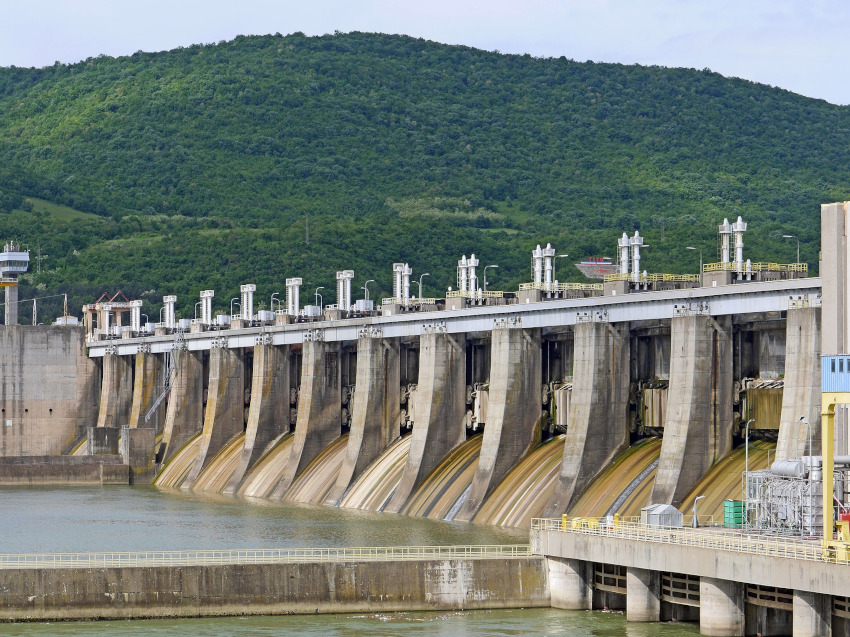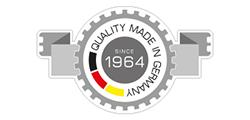
BERKY solutions for removing invasive plants and sediment in reservoirs and catchment lakes
Special Boats against water plants and sediment deposits in reservoirs.
In recent history, catchment lakes and Reservoirs played an important role for water management. Reservoirs of larger rivers were and still are being used to produce drinking water, as water reservoirs, for flood protection or to generate electricity through hydropower plants. The latter poses as an important renewable energy source, especially in times of the current energy crisis. Countries such as China, Brazil or the USA are increasingly relying on hydropower plants. However, the operation of these power plants is hindered by sediment deposits or an increased growth of water plants. Special boats from BERKY can be used to keep reservoirs free from aquatic plants and sediment accumulations.
Invasive waterplants – Where do they come from and why can they be problematic
Due to the intentional and unintentional import of exotic aquatic plants, for example by selling them as ornamental plants for gardens or through transport in feathers of migratory birds, some plant species reached native waters. Through climatic changes, they are able to grow in regions that could not be populated in the past. Under optimal conditions, such as high nutrient levels and plenty of access to light, they are able to form mass populations in water bodies, especially in the summer months, and literally overgrow them. In addition to non-European species such as the American Waterweed (Elodea sp.), native species like the Coontail (Ceratophyllum demersum) can also form dominant stands.
Due to weak roots, the plants are only slightly anchored to the lake or river ground and often float freely in the entire water body. Stems that break off easily also help spread the plants. In reservoirs used for generating electricity through hydropower plants, these plant species can cause problems by clogging the protection rake, that is positioned in front of the power generating turbine. The hydro powerplant can no longer operate on full capacity.
Sediment deposits in reservoirs – What are the consequences?
In addition to aquatic plants, the deposition of sediments in reservoirs can also be problematic. Due to water flow of rivers that are dammed, transported sediment gets caught at the dam walls. The deposition of additional sediments in the reservoir leads to a flattening of the lake ground, resulting in a lower reservoir volume. In addition, the fine stone particles can wear out the turbines or pumping systems. High maintenance and operating costs are the result.
What can be done against invasive aquatic plants?
To control aquatic plants, using a mowing boat or aquatic weed harvester such as the BERKY TRITON series is an efficient way to deal with them. Thanks to a front conveyor belt, the aquatic weed harvester is able to collect aquatic plants and transport them to the shoot of the boat. On the shore, the collected plants can then be unloaded via same conveyor belt. The boat is equipped with a double-blade mowing unit on its front. It can cut and collect roote das well as floating plants easily.
As an alternative weed control method, chemical pesticides are occasionally being used in rivers and lakes. As a biological control method, specialized fish or insect species are sometimes released to contain plant spread by feeding on them. However, these methods are only effective under special conditions. In addition, chemical control agents and herbicides can also negatively affect populations of native plant species.
How can sediment deposits be removed?
When dealing with sediment deposits, a suction dredger or dredge boat can be used to remove it from the watercourse and deepen the reservoir. The usage of BERKY dregding boats has proven very efficient and cost effective in that regard by making use of a simple mechanic, similar to a vaccum cleaner. A pump is creating hypotension under water and conveys the sediment to the shore of the lake via tube, where it can be collected in geotubes. The BERKY POSEIDON 770, for example, is able to pump up to 770 m³ of sediment substance per hour. Front stilts allow the machine to move into the water on its own and provide a high degree of stability while operating. An additional benefit of the stilts is the machine‘s ability to enter and leave lakes autonomously, which makes unloading and loading very convenient. No additional crane or exceptional permissions for transport are needed. In comparison to similar boats, the BERKY POSEIDON 770 uses two coiling free pivoting drive screws in anti-weed design to prevent plants from clogging the ship’s propeller.
BERKY offers solutions
BERKY’s solutions are able to maintain the functionality of reservoirs and ensure trouble-free operation of hydropower plants. If water plants or sediment deposits are causing problems in your reservoir, or if you have any further questions about the special BERKY boats, please do not hesitate to contact us. Our experienced technicians and environmental scientist can advise you.
Foto: Hydro power plant “Eisernes Tor1” in the Donau at the border between Serbia and Romania, Public Domain
write to us:
If you have any questions regarding the careful maintenance of watercourses or the flora and fauna at the watercourse, please feel free to contact our environmental scientist:
Find your perfect solution fast
Discover our selection of boats and use our configurator to find your ideal solution



